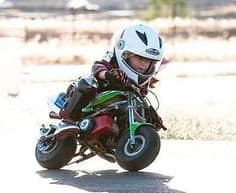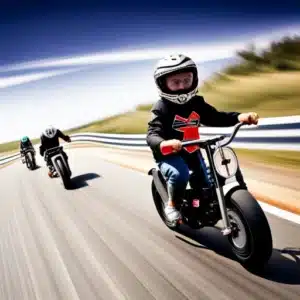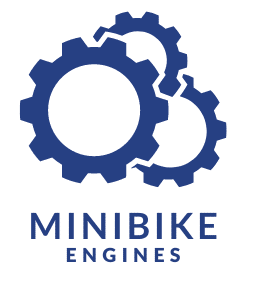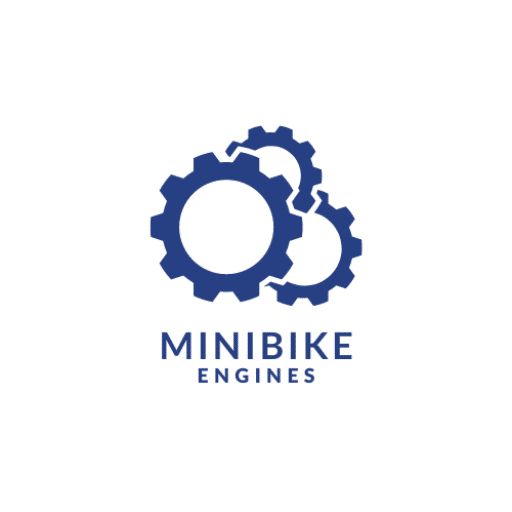
Building a Mini Bike with Your Children: A Fun and Engaging DIY Project
Introduction
Building a mini bike or go-kart with your children is a fun and rewarding experience that can create memories that last a lifetime. With the convenience of online shopping, it’s easier than ever to source the parts you need to build your own vehicle.
Section 1: Planning and Preparation
Before starting the construction of your mini bike, it’s essential to plan and gather all the necessary components and tools.
1.1 Choosing the Right Mini Bike Kit
When selecting a mini bike kit, consider factors such as the age and skill level of your children, the intended use of the mini bike, and your budget. Look for kits that come with comprehensive instructions and all the essential components required for assembly. Some recommended mini bike kits for beginners include [Kit 1], [Kit 2], and [Kit 3].
1.2 Gathering the Necessary Tools and Materials
To build a mini bike, you will need the following tools:
- Wrench set
- Socket set
- Screwdrivers
- Allen wrenches
- Pliers
- Welding equipment (if applicable)
- Safety gear (gloves, goggles, etc.)
Additionally, you will need the following materials:
- Mini bike frame
- Mini bike engine
- Wheels and tires
- Brakes
- Suspension components
- Handlebars and controls
- Wiring and electrical components
- Safety gear (helmet, goggles, etc.)
Section 2: Step-by-Step Assembly Guide
Once you have all the necessary components and tools ready, it’s time to start assembling your mini bike. Follow this step-by-step guide to ensure a successful build.
2.1 Setting Up the Workspace
Create a safe and comfortable workspace where you and your children can work on the mini bike. Clear the area of any potential hazards and provide sufficient lighting. Organize your tools and materials within easy reach.
2.2 Frame Assembly
Begin by assembling the frame according to the instructions provided with your kit. Align the frame components and securely fasten them using bolts or welding techniques if required. Ensure the frame is stable and well-built to support the other components.
2.3 Installing the Engine
Choose a suitable engine for your mini bike based on power and size requirements. Mount the engine onto the frame using appropriate brackets and secure it tightly. Connect the necessary components such as the throttle, fuel line, and exhaust system.
2.4 Adding Wheels, Brakes, and Suspension
Install the wheels onto the axles and secure them using the appropriate nuts or bolts. Attach the brakes and ensure they are properly adjusted for effective stopping power. Install the suspension components to enhance the ride quality and stability of the mini bike.
2.5 Attaching Handlebars and Controls
Position the handlebars on the frame and secure them tightly. Connect the throttle, brake lever, and other controls according to the manufacturer’s instructions. Ensure the handlebars are aligned properly for comfortable and safe riding.
2.6 Wiring and Electrical Connections
Refer to the wiring diagram provided with your kit to connect the electrical components such as lights, ignition, and battery. Follow the instructions carefully and ensure all connections are secure and properly insulated to prevent any electrical issues.
Section 3: Safety Considerations
Safety should be a top priority when building and riding a mini bike with your children. Teach them the importance of following safety guidelines and provide the necessary safety gear.
3.1 Ensuring Proper Safety Gear
Before riding the mini bike, make sure your children are equipped with the following safety gear:
- Helmets: Properly fitted helmets that meet safety standards.
- Goggles: Protect their eyes from dust, debris, and wind while riding.
- Protective Clothing: Long pants, closed-toe shoes, and long-sleeved shirts to protect against abrasions and potential injuries.
- Gloves: Non-slip gloves to improve grip and protect hands during handling and riding.
3.2 Teaching Basic Riding Skills
Before letting your children ride the mini bike, teach them basic riding skills and ensure they understand and follow safety rules:
- Balancing: Teach them how to maintain balance while sitting on the mini bike and how to distribute their weight for better control.
- Steering: Explain how to steer the mini bike by turning the handlebars gently and smoothly.
- Braking: Teach them how to apply the brakes properly and gradually to avoid sudden stops.
- Acceleration: Show them how to control the throttle and accelerate smoothly.
- Obstacle Awareness: Emphasize the importance of being aware of their surroundings and looking out for obstacles or potential hazards while riding.
Supervise your children closely during their initial rides and gradually increase their riding area and complexity as they gain confidence and proficiency.
Section 4: Maintenance and Upgrades
To ensure the longevity and optimal performance of your mini bike, regular maintenance and potential upgrades may be required.
4.1 Routine Maintenance Tips
- Cleaning: Regularly clean the mini bike to remove dirt, debris, and grime that can affectperformance and aesthetics.
- Lubrication: Keep moving parts lubricated to minimize friction and ensure smooth operation.
- Inspection: Conduct regular inspections to check for any loose bolts, worn-out parts, or signs of damage that may require repair or replacement.
- Tire Maintenance: Check tire pressure, tread wear, and overall condition regularly, and replace tires as needed.
- Battery Care: If your mini bike is electric, maintain the battery by charging it as recommended and ensuring proper storage during periods of inactivity.
4.2 Performance Upgrades and Customization
As your children gain more experience and confidence, you may consider performance upgrades or customization options to enhance the mini bike’s capabilities. Some popular upgrades include:
- Engine Upgrades: Install a more powerful engine to increase speed and performance.
- Suspension Upgrades: Upgrade the suspension system to improve ride comfort and handling.
- Exhaust System: Install a high-performance exhaust system for better sound and improved airflow.
- Lighting Upgrades: Add additional lights or upgrade existing ones for improved visibility during low-light conditions.
Before making any upgrades or modifications, research and consult with experts to ensure compatibility and safety.
In The End
Building a mini bike with your children provides a fantastic opportunity for bonding, learning, and creating lasting memories. By carefully planning, gathering the necessary components and tools, and following the step-by-step assembly guide, you can embark on an exciting DIY project that teaches valuable skills and fosters teamwork. Remember to prioritize safety by ensuring proper safety gear and teaching your children basic riding skills. Regular maintenance and potential upgrades will keep the mini bike in top condition and allow for personalized customization. Enjoy the journey of building and riding a mini bike with your children, and cherish the memories you create together.
Glossary
- Mini Bike Kit
- A package that contains all the necessary parts to build a mini bike.
- Wrench Set
- A set of tools used to provide grip and mechanical advantage in applying torque to turn objects.
- Socket Set
- A set of removable sockets used with a ratcheting wrench to tighten and loosen bolts.
- Allen Wrenches
- A hexagonal wrench, especially one with ends that fit into the recesses of an Allen screw.
- Welding Equipment
- Tools used to join metals together by melting the parts and adding a filler to form a joint.
- Mini Bike Frame
- The structural skeleton that supports all the components of the mini bike.
- Mini Bike Engine
- The power source of the mini bike, responsible for its movement.
- Brakes
- Devices used to slow down or stop the mini bike.
- Suspension Components
- Parts that contribute to the mini bike’s handling and holding to the road.
- Handlebars
- A bar used by the rider to steer the mini bike.
- Throttle
- A control used to regulate the speed of the mini bike’s engine.
- Fuel Line
- A hose used to carry fuel from the tank to the engine.
- Exhaust System
- A system that guides reaction exhaust gases away from a controlled combustion inside an engine.
- Wiring Diagram
- A visual representation of the electrical system or circuit in a vehicle.
- Helmets
- Protective gear worn on the head to minimize injuries during accidents.
- Goggles
- Protective eyewear that prevents dust, wind, and debris from irritating the eyes.
- Protective Clothing
- Clothing worn to protect the skin from potential injuries.
- Non-slip Gloves
- Gloves designed to provide a better grip.
- Battery Care
- The process of maintaining the battery’s health by proper charging and storage.
- Engine Upgrades
- Modifications made to the engine to improve its performance.
- Suspension Upgrades
- Modifications made to the suspension system to improve ride comfort and handling.
- Exhaust System Upgrades
- Modifications made to the exhaust system for better sound and improved airflow.
- Lighting Upgrades
- Modifications made to the lighting system for improved visibility.

Performance Mini Bike Parts What to Know
Boost Your Ride with Performance Mini Bike Parts Mini bikes are an exhilarating hobby for enthusiasts. Elevate your

Why you should build a Mini Bike with your children!
Building a Mini Bike with Your Children: A Fun and Engaging DIY Project Introduction Building a mini bike or go-kart

